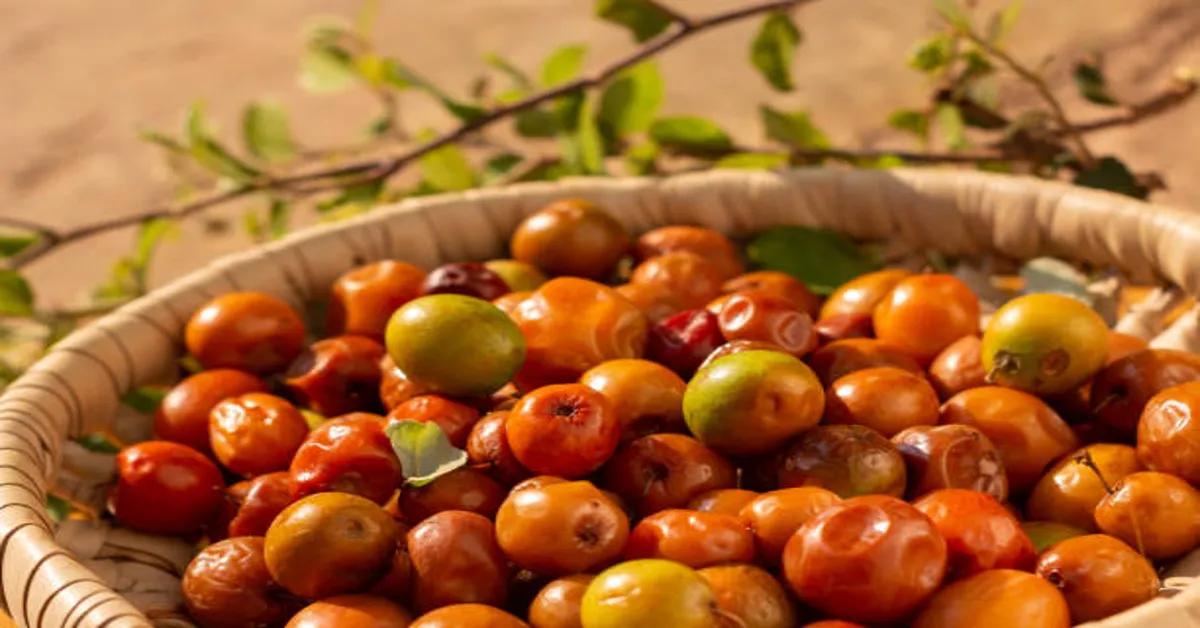Introduction
Žižole, commonly referred to in English as jujube or Chinese date, is a small fruit-bearing tree known for its sweet, chewy fruit and a rich tradition in both culinary and medicinal applications. While it may look like a small date or a round apple, its significance goes far beyond its appearance. Popular across Asia, the Mediterranean, and increasingly recognized globally, žižole is celebrated not only for its delightful flavor but also for its remarkable nutritional profile and therapeutic properties. With increasing interest in natural remedies and superfoods, žižole is re-emerging as a valuable fruit in modern diets and holistic health circles.
This article will take a comprehensive look at žižole: its origin, varieties, cultivation methods, health benefits, culinary applications, traditional medicinal uses, nutritional breakdown, and its increasing relevance in today’s health-conscious world. Whether you’re a gardener looking to grow this hardy plant, a nutrition enthusiast eager to diversify your fruit intake, or a health seeker curious about herbal medicine, this guide will provide all the details you need.
What Are Žižole?
Žižole (pronounced zhee-zho-le) are the fruits of the Ziziphus jujuba tree, a deciduous species that belongs to the Rhamnaceae family. Originally native to southern Asia, the plant has been cultivated for over 4,000 years, with historical records showing its use in Chinese traditional medicine and various cultural diets.
The fruit starts off green and apple-like in texture, ripening to a reddish-brown or dark maroon shade with a wrinkled skin, much like a date. It is often eaten fresh, dried, or used as an ingredient in teas, syrups, and confections. The taste of it is mildly sweet with a hint of tang when unripe, developing a deeper sweetness and slight spiciness as it matures.
Botanical Overview
- Scientific Name: Ziziphus jujuba
- Family: Rhamnaceae
- Common Names: Jujube, Red Date, Chinese Date, Indian Date
- Native To: China and parts of Central Asia
- Tree Height: 5 to 12 meters
- Fruit Season: Late summer to early autumn
Žižole trees are robust and drought-resistant, capable of thriving in arid climates and poor soil conditions. This makes them highly adaptable and ideal for cultivation in Mediterranean, subtropical, and even some temperate regions.
Types and Varieties
There are over 400 recognized cultivars of jujube, but the most commonly known types of it include:
- Lang Jujube – Known for its pear shape and crunchy texture, this variety is best consumed fresh.
- Li Jujube – Larger, rounder, and sweeter, often eaten dried.
- Honey Jar – Small but intensely sweet; excellent for snacking.
- Shanxi Li – One of the largest types, great for fresh eating or drying.
- GA 866 – Rich in sugar content, used primarily for drying and baking.
Each variety has subtle differences in taste, texture, size, and ideal consumption method. Growers often select varieties based on climate adaptability and intended use (fresh or dried).
Cultivation and Growing Conditions
Soil and Climate
Žižole thrive in a wide range of soil types but perform best in well-draining, sandy or loamy soils with a neutral to slightly alkaline pH. The trees are remarkably hardy and tolerate temperatures ranging from -20°C in winter to 40°C in summer, although they prefer sunny locations with minimal humidity.
Planting and Propagation
Propagation is generally done through:
- Seedlings (less common due to variability)
- Grafting (preferred for consistent fruit quality)
- Root cuttings or suckers
Saplings should be spaced at least 6 meters apart to allow for growth and sunlight penetration.
Watering and Care
While drought-tolerant, young trees benefit from regular watering during their first few seasons. Mature trees only require watering during long dry spells. Fertilization is generally minimal, often just compost or a balanced slow-release fertilizer in early spring.
Pests and Diseases
Žižole are relatively pest-free but can sometimes attract:
- Fruit flies
- Leaf spot fungi
- Scale insects
Proper pruning, sanitation, and natural remedies like neem oil can help manage these issues.
Nutritional Profile of Žižole
Žižole is incredibly nutrient-dense, making it a natural powerhouse of vitamins, minerals, and bioactive compounds. Here’s a breakdown of the typical nutrients found in 100g of fresh žižole:
- Calories: ~79
- Carbohydrates: 20g
- Sugar: 10g
- Protein: 1.2g
- Fat: 0.2g
- Dietary Fiber: 2.5g
- Vitamin C: 69 mg (115% of RDA)
- Potassium: 250 mg
- Iron: 0.5 mg
- Magnesium: 10 mg
- Calcium: 21 mg
- Flavonoids and Antioxidants: High content
One of the standout aspects of žižole is its high vitamin C content, which surpasses that of oranges and other citrus fruits. This, along with its antioxidant load, makes it ideal for supporting immune health and combating oxidative stress.
Health Benefits of Žižole
1. Immune Support
Due to its rich concentration of vitamin C and other antioxidants like flavonoids and phenolic acids, it can help fortify the immune system, fight infections, and reduce inflammation.
2. Sleep Aid and Stress Reduction
Traditional medicine, particularly in China and Korea, uses it as a natural sedative. Compounds like saponins and jujubosides in the seed have been shown to calm the nervous system, promote relaxation, and improve sleep quality.
3. Digestive Health
Žižole is a good source of dietary fiber, which aids digestion, prevents constipation, and improves gut health. It also supports beneficial gut bacteria due to its prebiotic properties.
4. Skin and Anti-Aging Effects
With high antioxidant content, it can help protect skin cells from damage caused by free radicals. Regular consumption is linked to improved skin elasticity and a reduction in fine lines.
5. Heart and Blood Health
Potassium, iron, and magnesium in it contribute to heart health by supporting blood pressure regulation, enhancing circulation, and preventing anemia.
6. Blood Sugar Control
Despite their natural sweetness, it have a low glycemic index, making them safe in moderation for diabetics. Compounds within the fruit may also support insulin sensitivity.
Culinary Uses of Žižole
Žižole is highly versatile in the kitchen, lending itself to both sweet and savory dishes.
Fresh Eating
The simplest way to enjoy it is to eat them raw. When fresh, they are crisp like apples and mildly sweet. Some prefer them at the semi-ripe stage for their tart-sweet contrast.
Dried Žižole
Drying concentrates their sugar content and enhances flavor, making them a chewy, nutritious snack. Dried žižole are also common in:
- Trail mixes
- Herbal teas
- Medicinal broths
- Baking (cakes, muffins, bread)
Cooking Applications
In culinary traditions across Asia and the Middle East, žižole are often stewed with meats, especially poultry and lamb, to impart a subtle sweetness and earthy flavor. They are also used in:
- Rice dishes
- Porridges
- Syrups
- Preserves and jams
Traditional Medicinal Uses
In Traditional Chinese Medicine (TCM), it is considered a tonic for qi (life energy), often used to nourish the blood and calm the spirit. It is commonly prescribed in formulas for:
- Fatigue
- Insomnia
- Anxiety
- Digestive disorders
- Menstrual irregularities
In Ayurvedic and Middle Eastern practices, it is similarly revered for its calming and rejuvenating effects.
Žižole in Modern Wellness
Today, žižole is gaining recognition in global wellness communities as an adaptogen—substances that help the body adapt to stress. With increasing scientific validation of its benefits, it extracts are now found in:
- Dietary supplements
- Herbal teas and tinctures
- Skin care products
- Functional beverages
Its rise in popularity is further fueled by trends toward plant-based, clean-label, and naturally healing foods.
How to Store and Preserve
- Fresh: Store in a cool, dry place; refrigerate for longer shelf life (up to 2 weeks)
- Dried: Keep in airtight containers in a dark cupboard; can last up to a year
- Frozen: Can be frozen either whole or pitted for use in smoothies or stews
Sustainability and Ecological Importance
Žižole trees are not only low-maintenance but also beneficial for soil enrichment due to their deep root systems, which prevent erosion. Their ability to survive in semi-arid climates makes them a promising crop in areas affected by climate change and water scarcity.
Conclusion
Žižole may be small in size, but it holds immense value nutritionally, medicinally, and ecologically. Whether you choose to grow it in your backyard, incorporate it into your meals, or use it for natural health remedies, žižole is a fruit worth exploring and celebrating. As science continues to affirm the ancient wisdom surrounding this fruit, it stands as a true testament to nature’s ability to nourish and heal. With minimal effort, it offers a path toward better health, a richer diet, and a more sustainable lifestyle.
ALSO READ: Erothto: The Essence of Emotional Desire and Human Connection
FAQs About Žižole
1. Are žižole and dates the same fruit?
No, žižole and dates are different fruits. Dates come from the date palm tree (Phoenix dactylifera), while žižole come from the Ziziphus jujuba tree. While dried žižole resemble dates in texture and color, they are botanically and nutritionally distinct.
2. Can diabetics eat žižole?
Yes, žižole has a low glycemic index and contains complex sugars that digest slowly. In moderation, it can be included in a diabetic-friendly diet, but it is best to consult a healthcare provider for personalized advice.
3. Is it safe to consume žižole daily?
In most cases, yes. Žižole is considered safe and healthy for regular consumption. However, individuals with digestive sensitivity or those taking sedatives should moderate intake or consult a healthcare professional.
4. Can žižole be grown in cold climates?
Žižole trees are surprisingly hardy and can tolerate cold winters, especially dormant temperatures down to -20°C. However, they require a hot summer for optimal fruiting, so regions with long, warm seasons are ideal.
5. What’s the best way to use žižole for better sleep?
To improve sleep, žižole seeds or dried fruit can be brewed into tea. Consuming this tea in the evening may help calm the nervous system and promote restful sleep due to natural sedative compounds like jujubosides.









